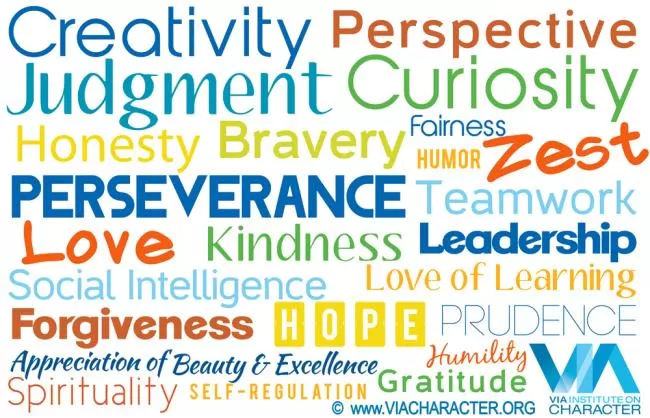Character Strengths

Do you need help identifying your signature strengths? According to the VIA Institute on Character, knowing your character strengths isn’t just interesting information to have; it can have a positive impact on your life overall. It is believed that understanding your strengths can help you: 1. Manage and overcome problems; 2. Improve your personal and professional relationships; 3. Enhance your overall sense of well-being.
Martin Seligman (Founder of Positive Psychology) and his research group have a website through the University of Pennsylvania called: authentichappiness.org. This site includes information on learning and applying the principles of positive psychology to any domain, such as a job search. We have talked about the site before on the OITE Career Blog when we discussed the importance of positivity and resilience in your job search in past blog posts like “Enhancing Optimism and Resilience in Your Job Search & Beyond”. This website has a whole range of different surveys that you can take, such as assessments on happiness, grit, work-life balance, etc. The one we suggest focusing on today is the Signature Strengths Survey which helps you identify your top five strengths.
This online assessment denotes six classes of virtues that make up the 24 character strengths listed. These six classes and corresponding strengths include:
- Wisdom and knowledge
Cognitive strengths that entail the acquisition and use of knowledge Strengths: Creativity, Curiosity, Judgment, Love-of-Learning, Perspective
- Courage
Emotional strengths that involve the exercise of will to accomplish goals in the face of opposition, external or internal Strengths: Bravery, Honesty, Perseverance, Zest
- Humanity
Interpersonal strengths that involve tending and befriending others Strengths: Kindness, Love, Social Intelligence
- Justice
Civic strengths that underlie healthy community life Strengths: Fairness, Leadership, Teamwork
- Temperance
Strengths that protect against excess Strengths: Forgiveness, Humility, Prudence, Self-Regulation
- Transcendence
Strengths that forge connections to the larger universe and provide meaning Strengths: Appreciations of Beauty, Gratitude, Hope, Humor, Spirituality Hopefully this assessment will help you focus on not only identifying your strengths but also finding new ways to begin using those strengths more intentionally within your life. A logistical note about taking this survey: it is quite long as it has 240 questions and you can’t save it and come back to it, so be sure to take it when you have sufficient time. You do have to create a log in to access the surveys, but by participating you are actually paying it forward in a way by helping with their positive psychology research.


